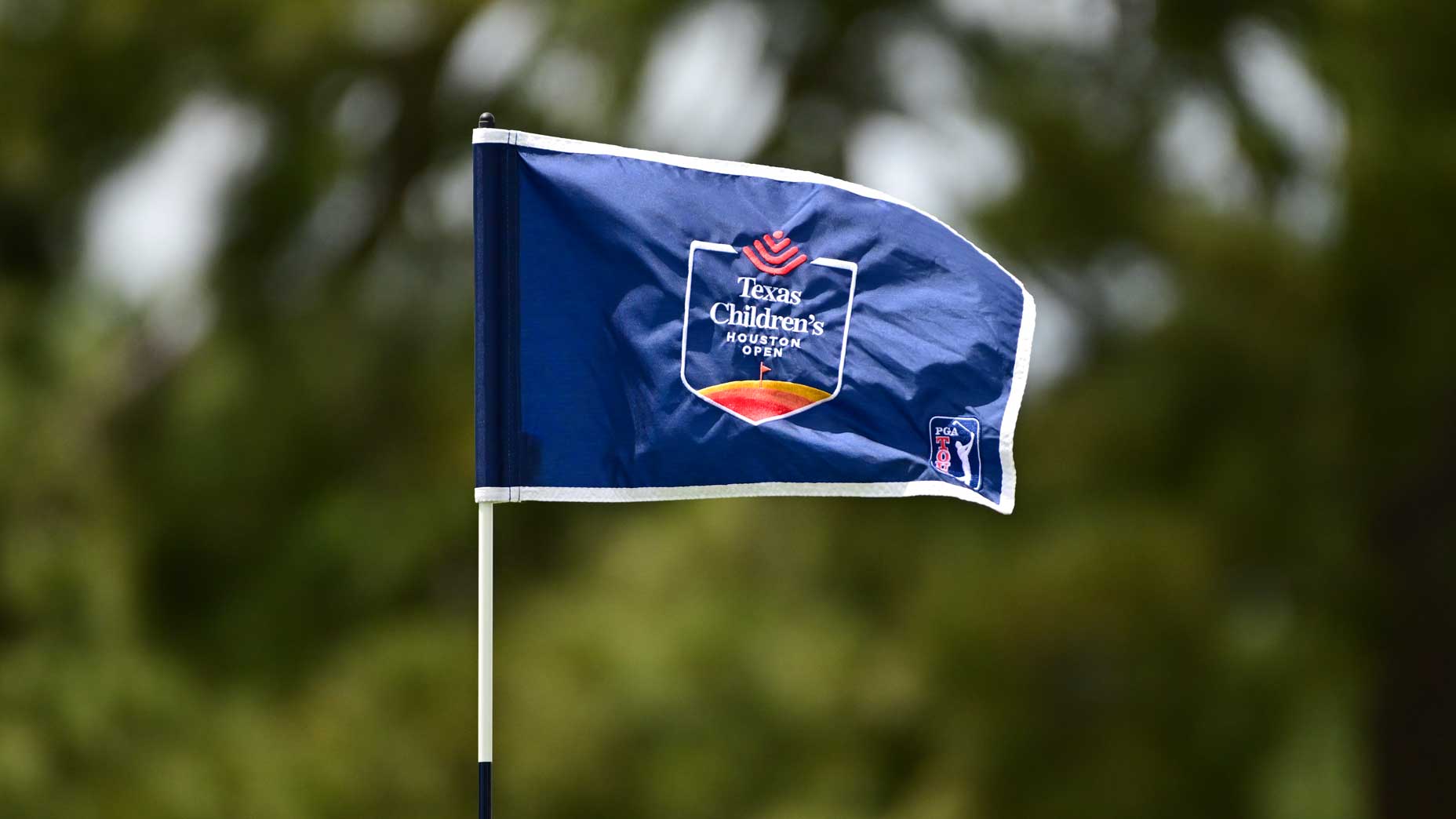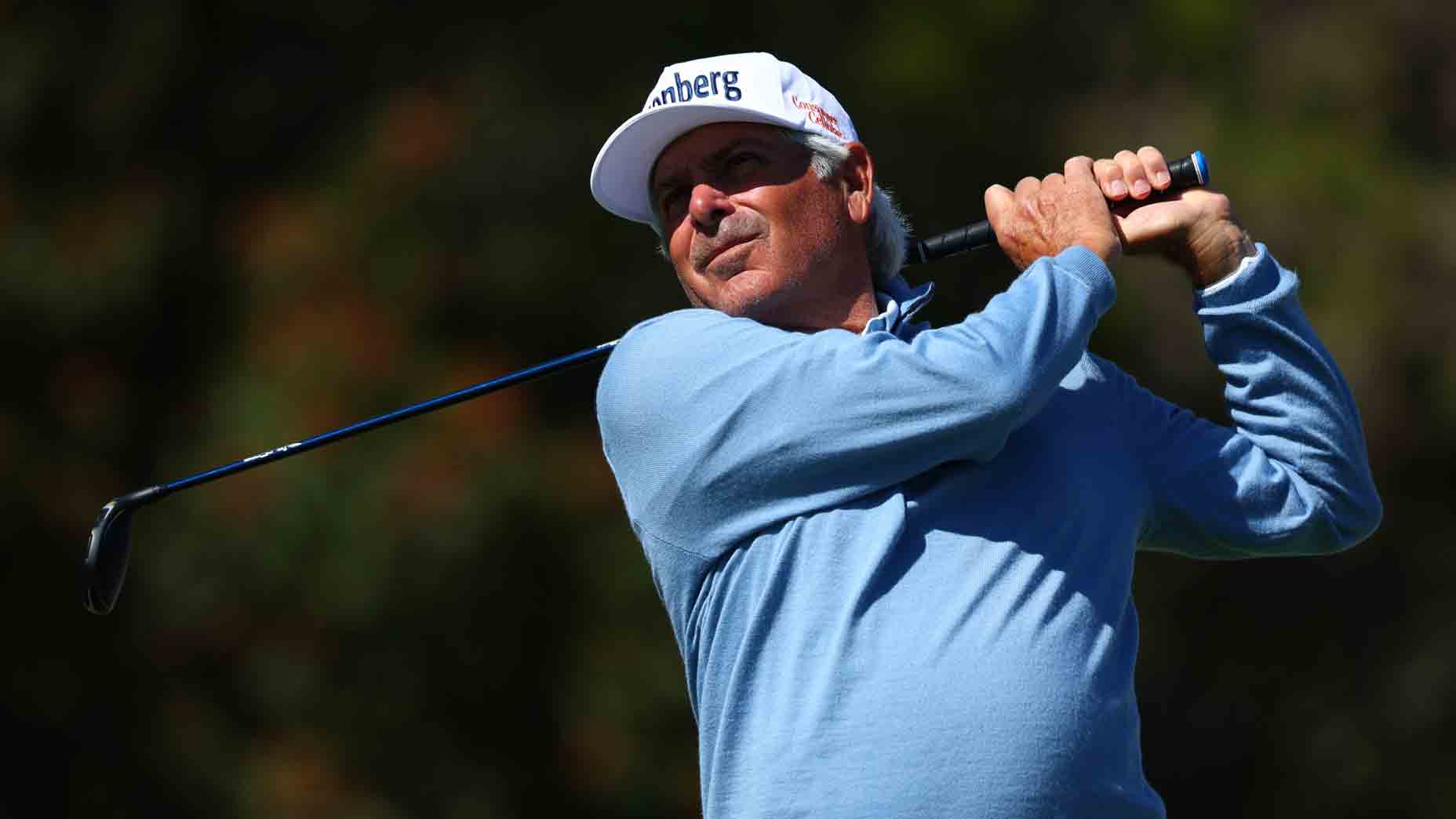 Who will win the Masters? Peter Kostis and Gary McCord weigh in
Who will win the Masters? Peter Kostis and Gary McCord weigh in
Firm, fast setup is sending the Presidents Cup into chaos — and it’s awesome
The first match of the Presidents Cup’s second session reached the drivable 6th hole around noon local time. Matt Kuchar pulled driver and hit it at the pin, leaving partner Dustin Johnson just 80 feet from the pin. Easy up-and-down, right? Not so much. From a sandy lie, D.J.’s second shot carried just too much heat and trickled just past the pin, off the back edge and all the way down to the bottom of a horrific bunker, leaving Kuchar short-sided from an awkward lie. He wound up making a seven-footer for bogey.
Friday morning brought alternate shot to Royal Melbourne, and the format spotlighted the course’s firm, fast conditions and treacherous slopes, bringing an element of chaos to the competition. In contrast to the soft, green, manicured setups we’re used to seeing on TV, the sand-based Aussie layout brought a whole different element into play; think the British Open, just with faster greens. Shades of Shinnecock, perhaps (but match play), or the U.S. Open setup at Chambers Bay mixed with Pinehurst. It was awesome.
Kuch drives it 27 yards from the pin on 6 and has to make a 7 footer for bogey
— No Laying Up (@NoLayingUp) December 13, 2019pic.twitter.com/7hSAOvoKwk
Some scenes from a chaotic second round:
No. 1 at Royal Melbourne is a short par-4, drivable for several of the players in the field (Gary Woodland hit driver over the green during the first session). But a precarious Friday pin position punished imprecise wedge shots; just five of the ten pairs even hit the green in regulation. Being close to the green was no guarantee of anything; Xander Schauffele left partner Patrick Cantlay with a 20-yard chip shot, and Cantlay couldn’t hold the green.
At No. 2, with his opponents in trouble, Tiger Woods hit a sawed-off low cut 5-wood that trundled up the firm fairway and onto the par-5 green in two, the short of shot he’d have far less opportunity to hit day-in, day-out on a typical PGA Tour setup.
1 hole into the Presidents Cup & I’m already loving the firm bouncy conditions of Royal Melbourne - the obsession nowadays with green and soft is so boring & predictable.
— Luke Donald (@LukeDonald) December 11, 2019
ADVERTISEMENT
This week at Royal Melbourne reminds us how watching what the ball does on interesting ground always translates better on TV and in person than 350 yard drives. https://t.co/fxCx9nqIjP
— @geoffshac.bsky.social (@GeoffShac) December 13, 2019
At No. 4, Marc Leishman’s approach shot from the fairway hit the green, then slowly trickled back to 40 yards. Partner Abraham Ancer hit his next shot up onto the green, only to watch it roll back to his feet, leaving the exact same 40-yard shot for their fourth.
At No. 5, Hideki Matsuyama’s putt rolled just past the cup — then reconsidered, reversed course and toppled in the edge from the opposite side.

All over the place, 20-footers for birdie turned into nervy six-foot comebackers. There were still birdies aplenty — Royal Melbourne plays short, and several pins were set up with backstops available — but there were plenty of holes where par was a winner, too. Bones Mackay described one putt as “the hardest 12-footer he’s ever seen.” (Johnson missed it, and winced, which is about as strong an emotional reaction as you’ll see from him.)
Alternate shot (that’s foursomes, if you must) did a far better job of revealing the course’s perils, too. Getting out of position didn’t mean players could pick up and root on their partner; their partner had to go play from wherever he’d been left. It was a far different style of golf than, say, the Hero World Challenge, where 11 of the 12 U.S. Team teed it up last week. The contrast was immediately obvious; the ball spent far more time rolling on the ground, rewarding precise shots and punishing indifferent efforts.
On a day when the International Team continued to build on their Day 1 lead, the course still took center stage (at least, until Patrick Reed seized it again). That was a good thing.
ADVERTISEMENT






